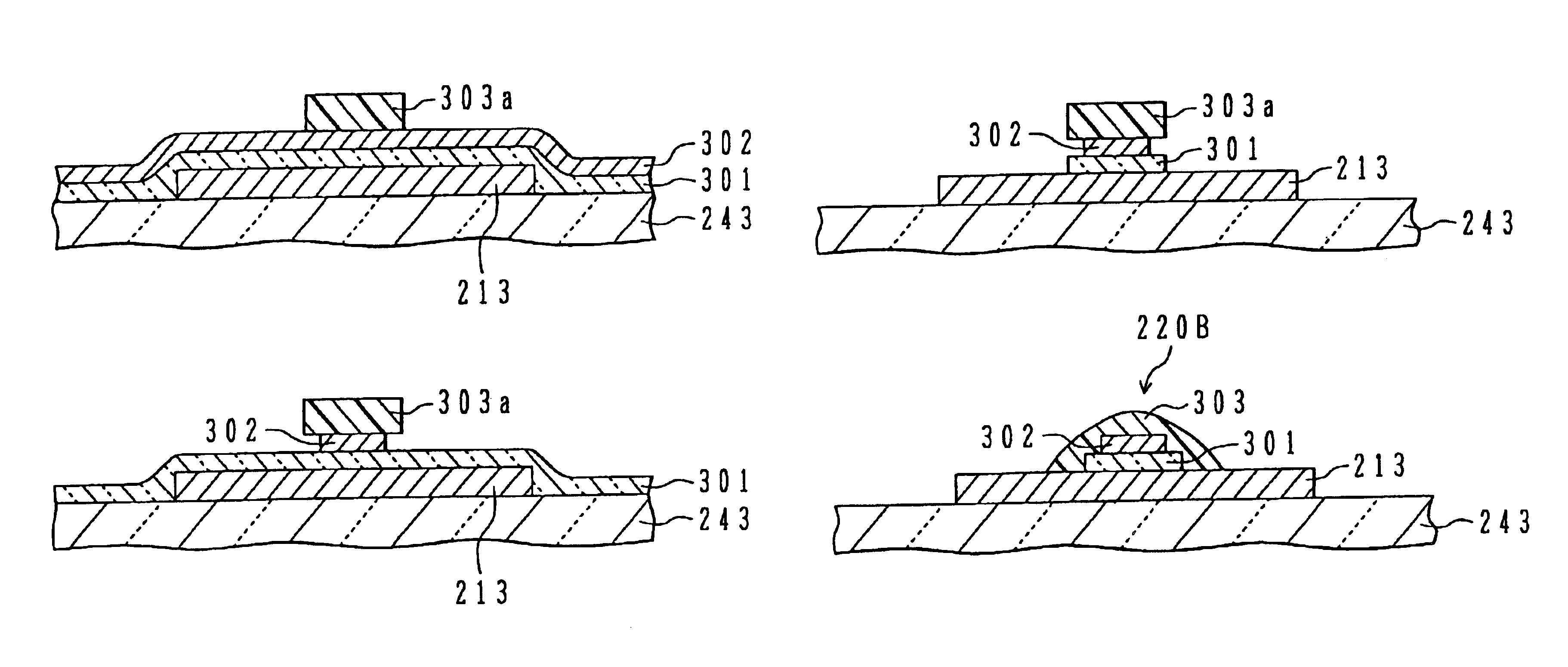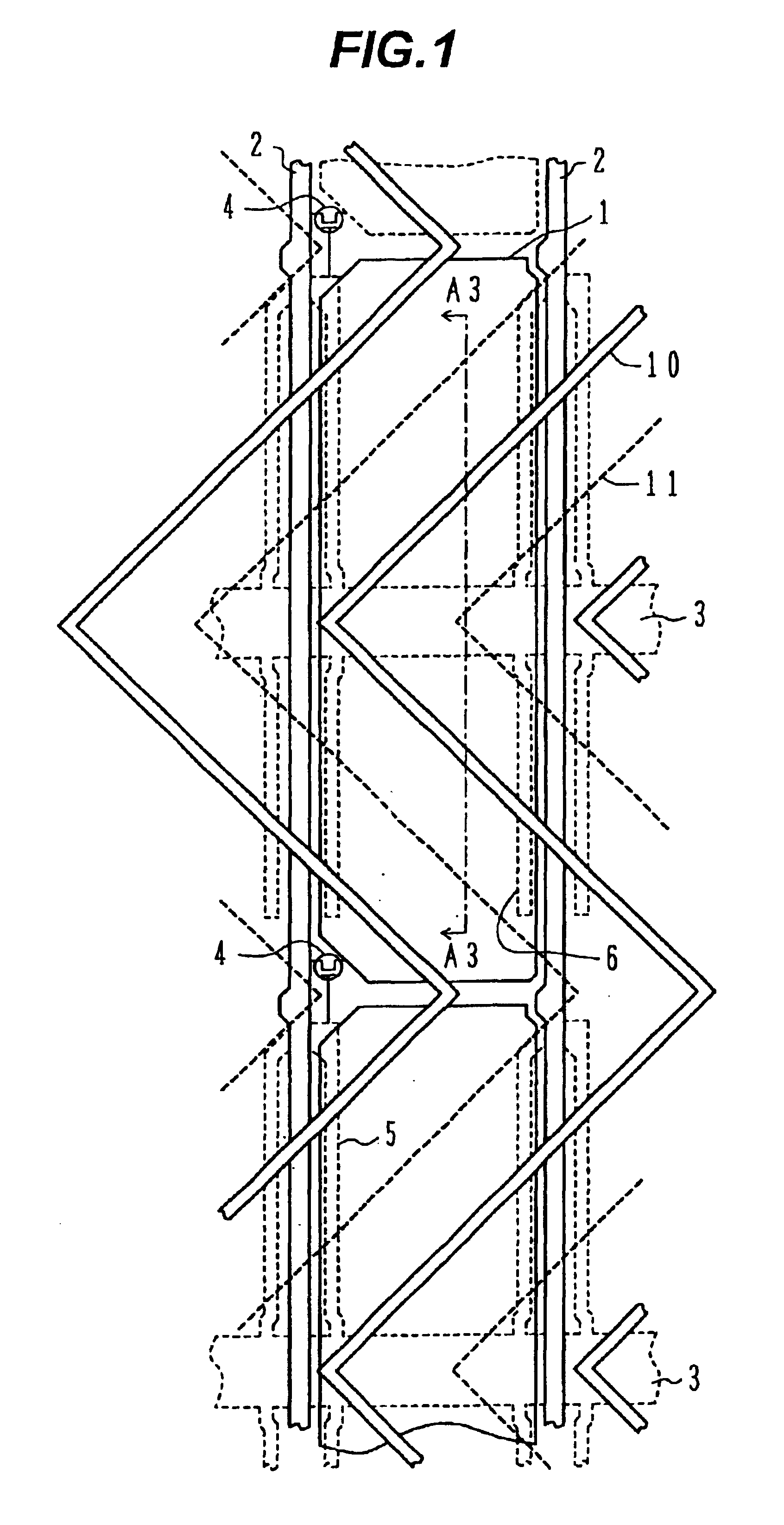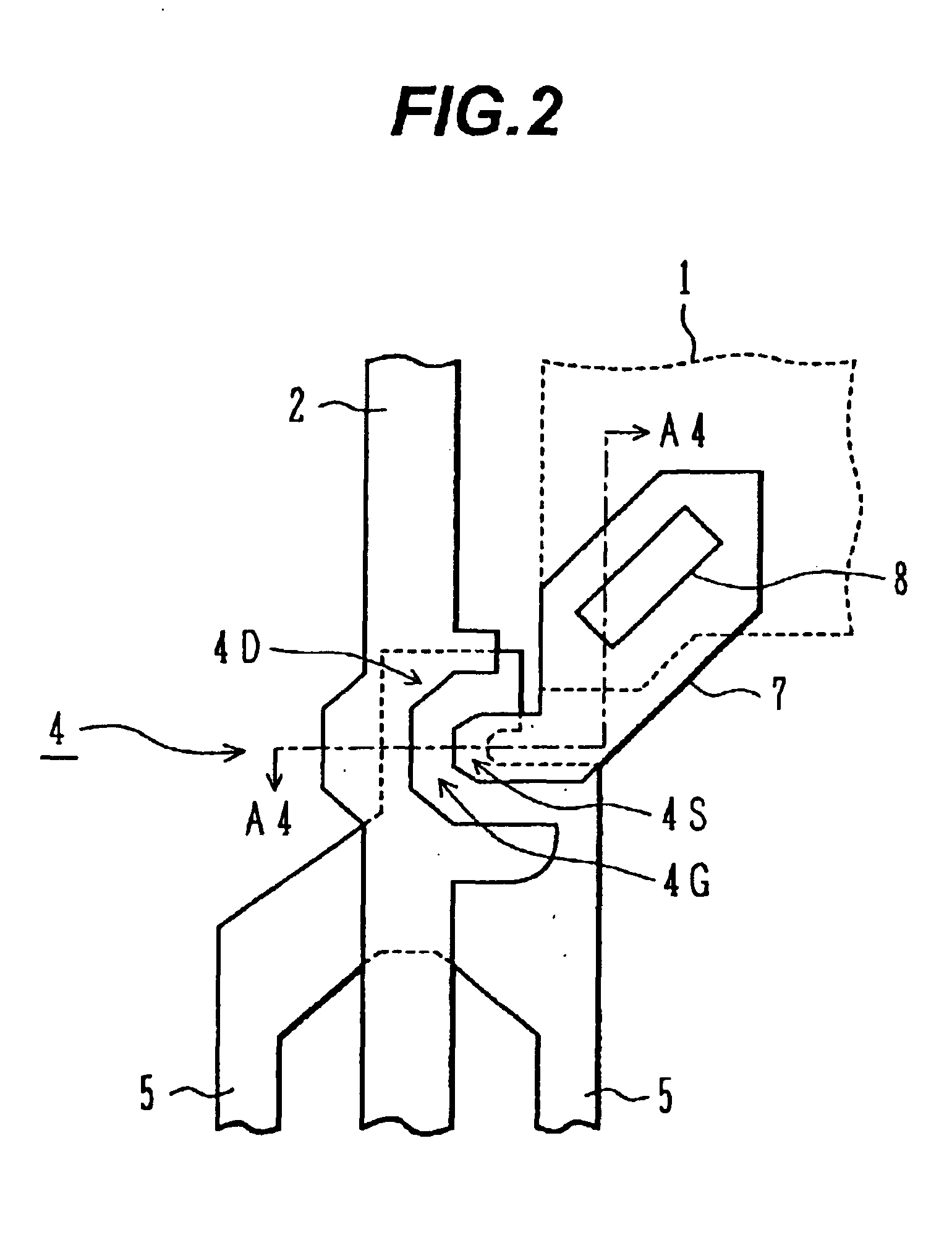Multidomain vertically aligned liquid crystal display device
a vertical alignment and liquid crystal display technology, applied in non-linear optics, instruments, optics, etc., can solve the problems of poor visual angle characteristics of homeotropic type liquid crystal display devices in the halftone display state, and achieve the effect of improving visual angle characteristics
- Summary
- Abstract
- Description
- Claims
- Application Information
AI Technical Summary
Benefits of technology
Problems solved by technology
Method used
Image
Examples
first embodiment
[0054]FIG. 1 is a plan view of a liquid crystal display device according to the invention. A plurality of pixel electrodes 1 are disposed regularly in the row and column directions on a TFT substrate. A data bus line 2 is disposed along each column of the pixel electrodes 1. The data bus line 2 extends in the column direction between two pixels adjacent in the row direction. A gate bus line 3 is disposed along each row of the pixel electrodes 1. The gate bus line 3 extends in the pixel electrodes 1 of the corresponding row, and preferably passes generally at the center of each pixel in the column direction, as viewed along the substrate normal direction.
[0055]A TFT 4 is disposed for each pixel electrode 1. TFT 4 connects the pixel electrode 1 and corresponding data bus line 2. The gate electrode of TFT 4 is connected via a gate connection line 5 to the gate bus line 3 corresponding to the row adjacent to the row of the pixel electrode 1 connected to TFT 4. A control signal applied t...
second embodiment
[0081]As in the second embodiment, since the pixel electrode 1 is not disposed under the first protrusion, disturbance of electric lines of force can be alleviated. Since the disturbed alignment area of liquid crystal molecules is localized near the first protrusion 10, the light shielding area can be made small.
[0082]The structure that the slit 1a matching the first protrusion 10 is formed may be applied to the liquid crystal display device previously proposed and shown in FIG. 26. Also in this case, disturbance of the alignment of liquid crystal molecules can be reduced.
[0083]FIG. 6 is a plan view of a liquid crystal display device according to the third embodiment. In the first embodiment, borders of each domain are defined by the first and second protrusions 10 and 11 shown in FIG. 1. In the third embodiment, the second protrusion 11 is not formed on the opposing substrate. In place of the second protrusion 11, slits 20 are formed in the pixel electrode 1.
[0084]As viewed along t...
third embodiment
[0086]As in the third embodiment, since the slits 20 are formed in the pixel electrode 1, an alignment restriction force relative to the liquid crystal molecules in the areas of the slits 20 weakens. Therefore, the domain border can be fixed to the areas of the slits 20.
[0087]Since the slits 20 are formed at the same time when the pixel electrode 1 is patterned, the number of processes does not increase. The second protrusions 11 of the first embodiment are not formed on the opposing substrate. The total number of processes can therefore be reduced.
[0088]FIG. 7 is a plan view of a liquid crystal display device according to the fourth embodiment. Different points from the liquid crystal display device of the third embodiment shown in FIG. 6 will be described.
[0089]In the third embodiment, the gate connection line 5 is disposed along the side of the pixel electrode 1. This layout is used in order to positively form the auxiliary capacitance between the gate connection line 5 and pixel...
PUM
| Property | Measurement | Unit |
|---|---|---|
| flection angle | aaaaa | aaaaa |
| widths | aaaaa | aaaaa |
| widths | aaaaa | aaaaa |
Abstract
Description
Claims
Application Information
 Login to View More
Login to View More - R&D
- Intellectual Property
- Life Sciences
- Materials
- Tech Scout
- Unparalleled Data Quality
- Higher Quality Content
- 60% Fewer Hallucinations
Browse by: Latest US Patents, China's latest patents, Technical Efficacy Thesaurus, Application Domain, Technology Topic, Popular Technical Reports.
© 2025 PatSnap. All rights reserved.Legal|Privacy policy|Modern Slavery Act Transparency Statement|Sitemap|About US| Contact US: help@patsnap.com



